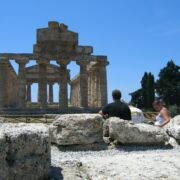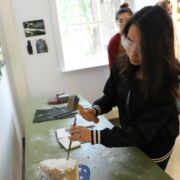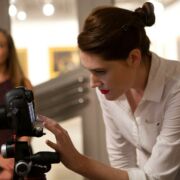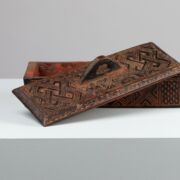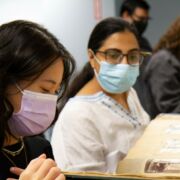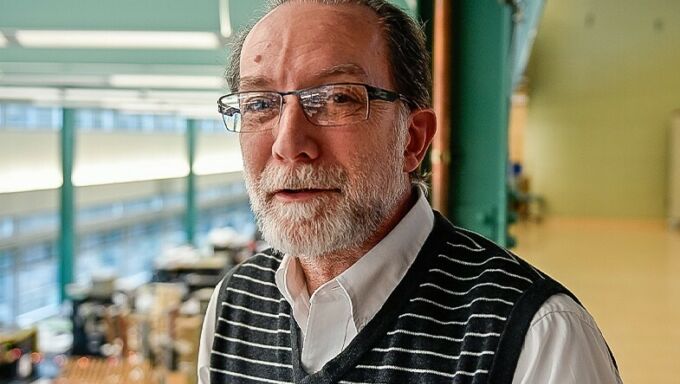
Department of Art History
Historical and interpretive studies
A Humanities Major in the Arts
Students can major or minor in art history, pursue a minor in architectural history, or work toward earning a museum studies certificate. Students have the opportunity to hold internships or assistantships at Penn State’s Palmer Museum of Art, known particularly for its strong holdings in American, African American, and contemporary art.
Advanced Studies with Renowned Scholars
Our M.A. and Ph.D. programs provide candidates with the opportunity to pursue advanced study directly with renowned scholars. The department’s faculty are internationally recognized scholars and critics known for their dedication to their students.
Contact
Department of Art History
240 Borland Building
University Park, PA 16802
814-865-6326
814-865-1242 (fax)
Robin Thomas
Head of the Department of Art History
Erica Nodell
Administrative Support Coordinator, Department of Art History
Emily Sikora
Administrative Support Assistant, Art History
Connect
Center for Virtual/Material Studies
- Carolyn Lucarelli, Manager
- Catherine Adams, Digital Support Specialist
Featured Research
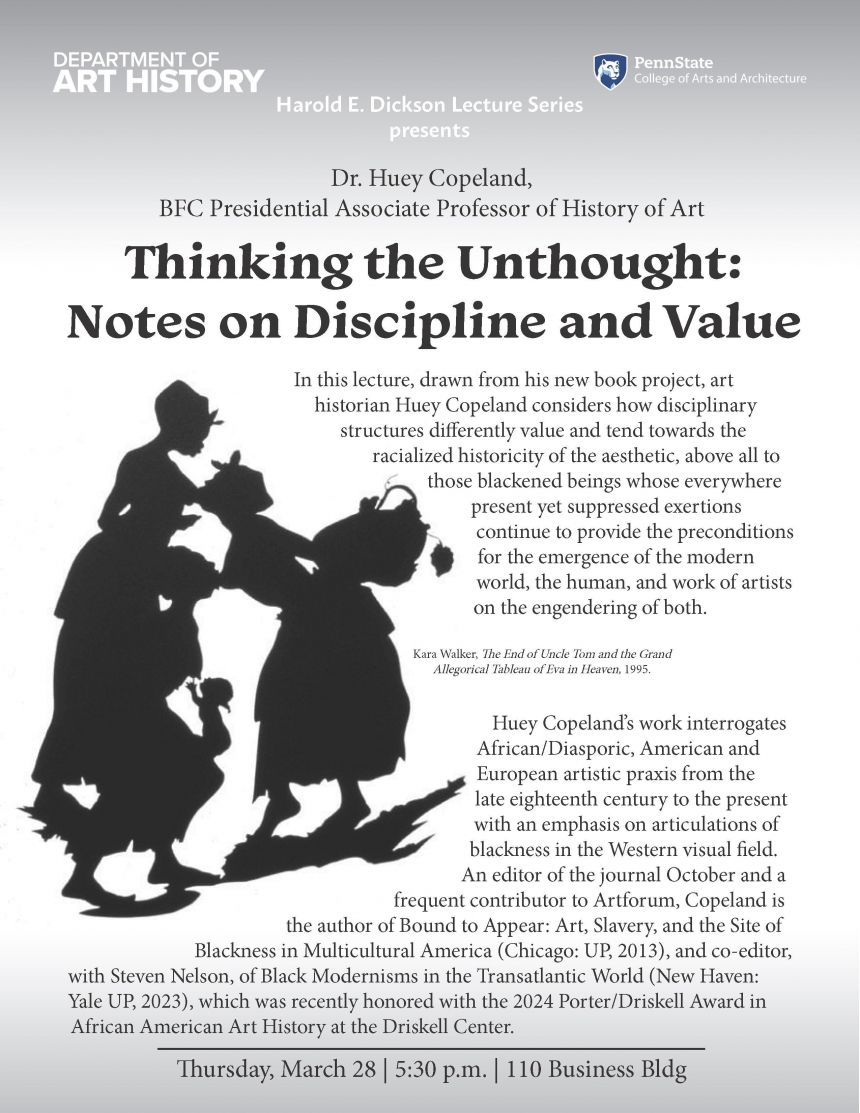
Upcoming Dickson Lecture, "Thinking the Unthought: Notes on Discipline and Value"
We are pleased to announce the upcoming Dickson Lecture delivered by Dr. Huey Copeland, BFC Presidential Associate Professor of History of Art, University of Pennsylvania, titled "Thinking the Unthought: Notes on Discipline and Value."
All are welcome to join us Thursday, March 28 at 5:30 pm in 110 Business Building.
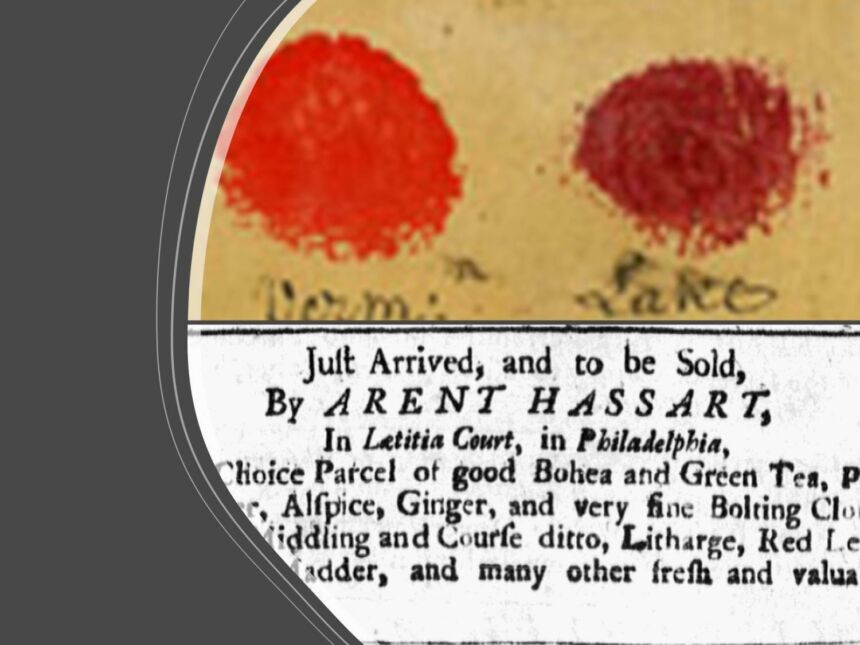
"Kress Foundation grant to support collaborative research on pigment trade"
Sarah K. Rich, Associate Professor of Art History, and the Center for Virtual/Material Studies (CVMS) at Penn State have been awarded a Kress History of Art Grant of $20,000, along with supplemental funding from Penn State University Libraries, to facilitate research into the transatlantic trade in pigments from the mid-18th century to the mid-19th century.
The grant will support a collaborative research project titled “The Political Economy of Colorants in the Atlantic World, 1750-1850.” The project aims to uncover the economic and political contexts of the colorant trade in the Americas, Europe and Africa, highlighting the relationships among artists and different trades while also situating colorants in the context of indigenous-settler relationships and the slave trade. Colorants are dyes and pigments used for coloring materials.
Learn More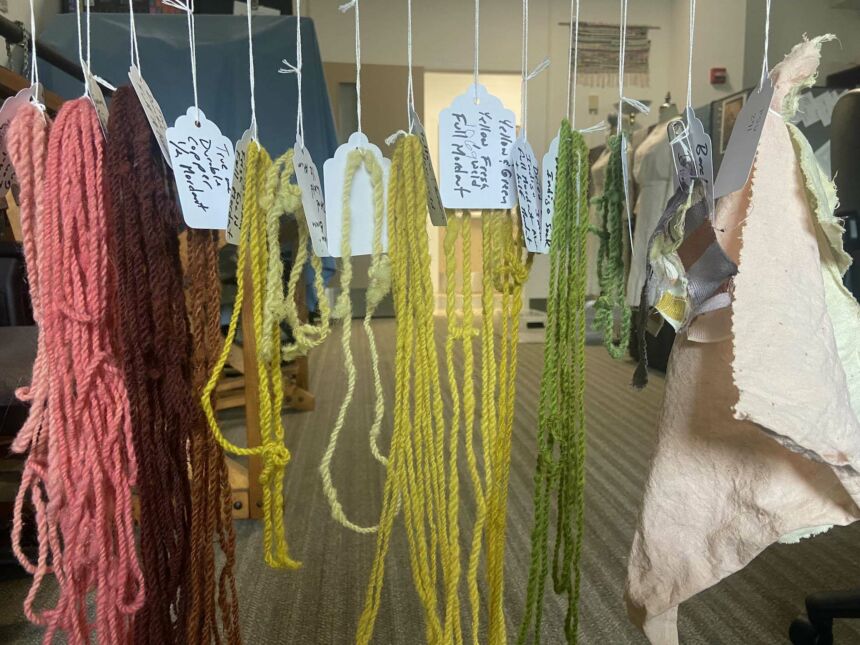
Dyestuff: Historical Materials of Color
What do wheat bran, hydrangea branches, oak galls, safflower petals, lotus pods, nutritional yeast, snails, coal tar, and mud have in common? They have all been used to make cloth colorful. Come examine these materials, and learn how they have produced extraordinary colors throughout history and around the world.
Dr. Sarah Rich is Associate Professor of Art History and co-curator of the exhibition Sad Purple and Mauve: A History of Dyes, on view until January 6 at PSU’s Eberly Special Collections Library at University Park.

Collecting the Andes
Amara Solari, professor of art history and anthropology, and Christopher Heaney, assistant professor of history, are working together on the three-part project celebrating Andean peoples and their art, culture, science, and history
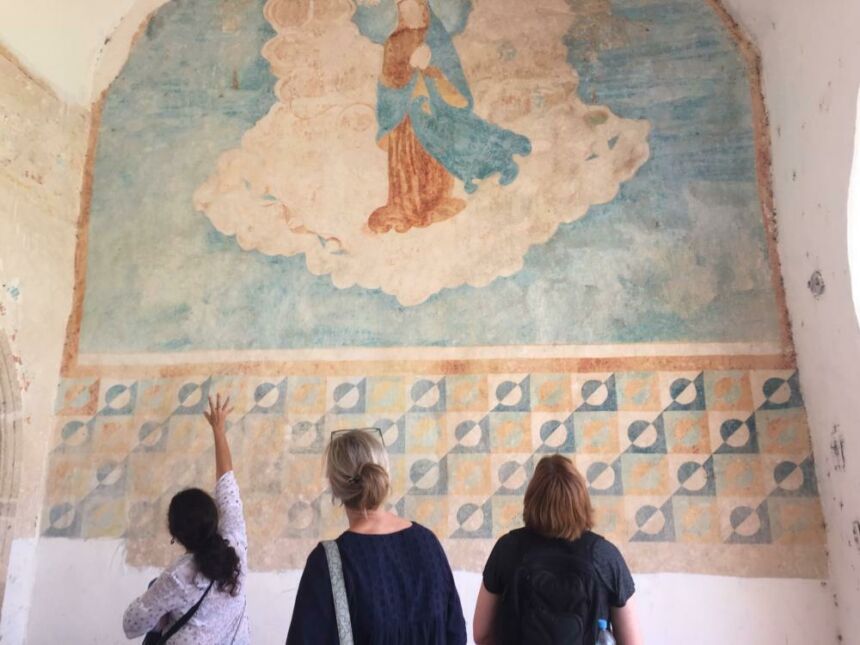
Amara Solari Featured in Research | Penn State Fall 2022
Amara Solari and colleagues have scoured the Yucatán peninsula to document and preserve religious murals painted by Maya Christian artists more than 400 years ago, pairing art history with cutting-edge materials science to gain important new insights about these fragile artworks.
Learn More
faculty spotlight
Craig Zabel
Dr. Zabel teaches courses in modern architecture, with particular emphases on the architecture of the United States, Germany, and Russia. His publications are primarily in the areas of early twentieth-century architecture, bank architecture, Prairie School architects, American public architecture, skyscrapers, and contemporary architects. His essay on Penn State’s architecture was published in This is Penn State: An Insider’s Guide to the University Park Campus (Penn State Press). His current research explores the history of the skyscraper and American popular culture, from P.T. Barnum’s oddities and NY’s Newspaper Row to the cinematic Emerald City of Oz. He is a recipient of the College of Arts and Architecture Faculty Award for Outstanding Teaching, Penn State’s Graduate Program Chair Leadership Award, and the Penn State Teaching Fellow Award: The Alumni Association and Student Award for Teaching Excellence. Dr. Zabel served as Head of the Department of Art History from 1998 to 2017, after serving as interim head from 1996 to 1998. In 2019, he founded the Iconic Modern Chairs collection in Penn State’s Architecture & Landscape Architecture Library.
Centers and Venues
Our broad program offerings are supported by rich research, archive, and display spaces.
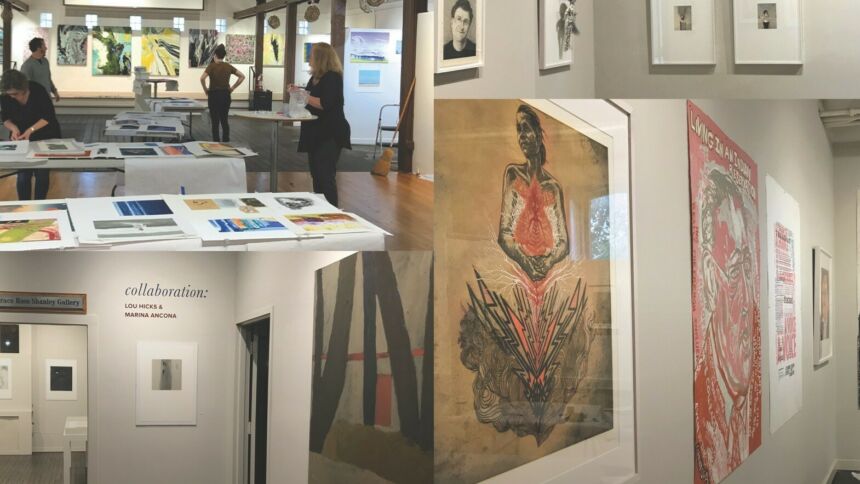
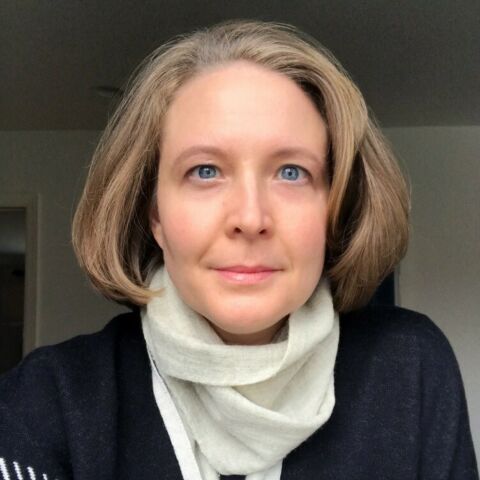
alumni spotlight
Kimberly Henrikson
Kimberly Henrikson is executive director at the Center for Contemporary Printmaking (Norwalk, CT) and president of the Print Club of New York. She is newsletter editor for the International Print Club Societies organization, and held a senior position at Artstor, where she managed training and support services for digital image licensing in higher ed and museum communities around the world.
